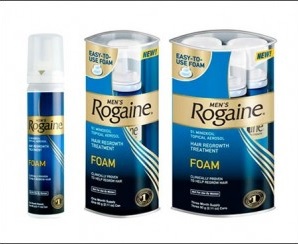Is Rogaine only useful in treating crown loss
There is no difference in the physiology of the crown and frontal regions of the scalp. Therefore, there would be no legitimate reason as to why the drug for hair loss management would work differently on different regions of the head. Furthermore, the medication also causes more hair to grow on the body, where the nature of these follicles is actually different from those on the scalp, particularly in terms of their DHT receptors. Thus it would be reasonable to assume that if Minoxidil can grow hair on the body, it should be able to exert some level of effectiveness on hair follicles in both the crown and hairline areas.
Understanding the Limitations of Hair Loss Medications
Although the dynamics of Minoxidil should be the same for different regions of the scalp, it would still be important to consider the level of miniaturization undergone by the follicles. This happens in a gradual progression, not all at once.
The application of a medication like Minoxidil or even Finasteride would offer the most potential for genetically predisposed follicles which have only just started to experience the impact of DHT. However, structures which have already lost their ability to grow new hair due to severe stages of miniaturization would receive the least benefit from using these drugs.
Therefore due to the way male pattern baldness tends to advance, the processes of miniaturization in the crown would have started more recently compared to the follicles in the hairline.
And if individuals are noticing that the effects of Minoxidil seem to be more pronounced in the crown compared to the hairline, this may be due to differences in the stages of miniaturization between the follicles of these regions.
This drug for pattern alopecia can offer some measure of promise in the hairline if there is still evidence of growth in this area.
Using Rogaine in the Crown and Hairline
Although Rogaine can be purchased without a prescription, it is still a good idea to consult with a physician about its exact usage. For certain individuals, it may be possible to use prescription drugs like ketoconazole shampoo and topical tretinoin to help improve the performance of the hair loss drug.
Minoxidil should ideally be applied twice a day to both the hairline, crown and other affected areas. However, for convenience sake, it may be possible to modify this regimen by applying one larger dosage at night.
Starting the usage of drug treatment for hair loss should be done as early as possible once the cause of shedding has been determined as being genetic. While regrowth is not a guarantee for everyone, Minoxidil can be used to help prevent more severe stages of baldness.

Related articles
Hair Transplant Alternative Rogaine ?
